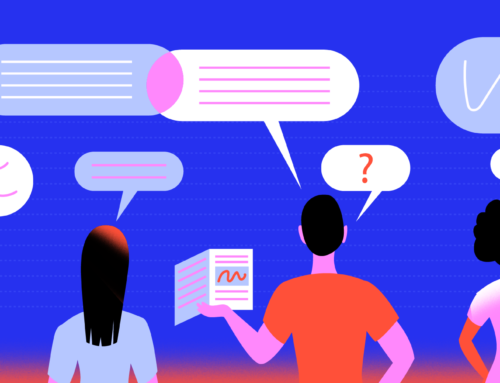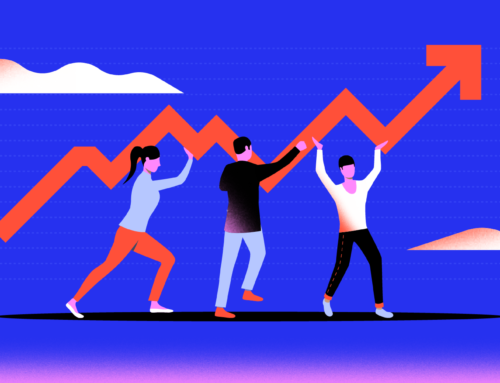Last Updated on October 17, 2021 – 12:28 pm
Companies all want to attract and retain talent, and it’s vital for any business. Training employees and making sure that they have growth opportunities is a very specific way to show that their company is investing in them, in their future, and while doing that, also in the company’s future. Research shows that 40% of employees who don’t receive the necessary training for their growth and adaptation will leave their positions within the first year. For Millenials, growth is even a more important factor: 87% of Millenials say that professional development and career growth are significant. That’s why companies must have personal employee development plans for their employees. In this article, we’ll tell you the basics of the employee development plan. What is it? Why is it important? And, of course, how to write one for an employee.
What is an Employee Development Plan?
An employee development plan or an employee growth plan is a crucial part of employee development. It is a strategic process in which the manager and employee work together. It helps employees improve their skills for their current roles and acquire knowledge and skills for possible new roles in an organization. It has to be actionable and collaborative in nature. It has to be tailored specifically to an individual’s skills, interests, and needs. Yes, it’s a growth plan, but growth doesn’t necessarily mean taking on a leadership role and a higher position within the organization. It means polishing, strengthening, and diversifying skills. You can think of it as a roadmap that provides direction on career growth, presents training and development opportunities, and enables the employee to attain the necessary skills. It provides the employee with the essential steps toward short-term and long-term goals. It shows the skills that the employee needs and how he/she can acquire them to reach the goals. When we say goals here, we also need to emphasize the importance of ‘purpose’ for the employee and the organization. According to a Harvard Business Review article, effectively implementing an employee growth and development plan can be attained by creating a purpose for the organization that motivates employees to work towards and support.Let’s emphasize here that the Millennials are no longer content to have a job; work should be meaningful and add value. The employee development plan should give the employee a chance to experience the company culture positively and boost employee engagement. As Jason Flynn and Arthur H. Mazor say in a Deloitte article, “In a digital world with increasing transparency and the growing influence of millennials, employees expect a productive, engaging, enjoyable work experience.”
So, in a nutshell, development plans allow employees to answer the following questions:
-How can I continually learn and grow in the next year?
-How can I do better in the future?
-How can I avoid performance problems faced in the past?
Now that we know what an employee development plan is, let’s look at why it is crucial to create one.
Why is it important to create an Employee Development Plan for each employee?
First of all, an employee development plan increases an employee’s engagement and motivation. 76% of employees say that a company would be more appealing if it offered additional skills training to its staff. 76% of Millennials believe professional development opportunities are one of the most critical aspects of company culture. These statistics show that it’s important for employees now and it will even be more important in the future. Employee development plans benefit both the employee and the organization by setting clear expectations and goals. If an organization has a specific roadmap for the future of the business, the plan can also act as a vehicle to develop and prepare the employees in that direction.
Here are three reasons why creating an Employee Development Plan is crucial for your business:
1-Increasing retention: The most obvious solution to increasing employee retention is creating more effective training and development programs, says Margaret Rogers in a Harvard Business Review article. However, she also points out an essential feature of the plan that needs to be considered: “I hear from business leaders every day who struggle to achieve their goals despite having elaborate programs in place. The main issue here is that many of these programs aren’t designed with the user, or the employee, in mind”. So, make sure that the employee is involved in the making of the plan.
2-Empowerment of employees: An employee development plan is a way to stay “connected” with your employees and inspire them with your vision. It is the key to the empowerment of employees, making sure they believe in themselves, in their skills, and their company’s existence and purpose. Research shows that leaders who inspire, ignite people’s imaginations, and mobilize them with a compelling vision are more impactful than managers who simply focus on the bottom line.
3-Training the next generation leaders: Having an employee development plan also means that your business considers its future by developing and preparing talent in a personalized way. For example, soft skills have become core to organizational and employee success. An employee development plan can target them to develop these critical skills such as delivering feedback, communication, and active listening.
Yes, it is crucial, and yes, we need it as an organization, but how can we write it?
How to Write an Employee Development Plan
Before creating an employee development plan for a specific employee, you need to think about your business goals first. What are the business-critical development areas for your company? Which skills are lacking in particular teams? What is the most significant risk factor for your business? Where can your business go? Identifying business-critical first gives you a chance to focus on the “must-haves” rather than “nice-to-haves,” says researcher Tugrul Turkkan, founder of Journey app, a next-generation development tool that autopilots continuous people development. When it is time to write an employee development plan, these will be your guides too. Another critical component of the preparation is “doing your homework” on the employee. What do we mean by that? Well, just like a business must understand what the customers need, managers must understand their employees to create ideal learning opportunities for them, and asking questions is the best way to do this. Asking them the skills they are comfortable with and the ones they need to develop is an excellent way to communicate and connect with them. Be curious and practice active listening and make sure you fully understand their insights. Now it’s time to write the employee development plan with your employee in just four steps:
1-Align the business-critical areas of your business and your employee. It means getting the information together and communicating it to the employee. Sometimes, this also means connecting both to a higher purpose: “A higher purpose is not about economic exchanges. It reflects something more aspirational. It explains how the people involved with an organization are making a difference, gives them a sense of meaning, and draws their support”.
2-Set development goals-Develop one topic at a time. Together with the employee, you can now set development goals. These goals can be growth-oriented, skills-oriented, and relationship-oriented. But remember, it’s always better to develop one topic at a time; you can use 90-day intervals to change the skills needed to develop. You can also use the wonders of technology and use a mobile app for this. Journey app, the next generation people development platform, provides actionable guidance for each employee to develop themselves throughout the year with 3-month intervals. Journey’s intelligent algorithm powered by data science and machine learning ensures a personalized and practical development plan.
3-Develop an action plan-Don’t forget the 70/20/10 rule. According to this rule of learning, 70% of learning experience should come from on-the-job experience, 20% from other employees, coworkers, or colleagues, and only 10% from training. ıt means you need to include on-the-job or stretch assignments in your employee development plan to make sure they learn while they “do” things. You also need to make room for coach-mentors; even better, you teach every person on the team how to make people around them better. “The best way to do this is to identify what people’s strengths are and then challenge them to teach their strengths to others.” And of course, for the remaining 10%, choose training wisely.
If you want to learn more about the 70/20/10 rule, you can check our article here.
4-Follow up- Update the plan as required. As a manager, part of the employee development process is to do regular follow-ups; you can consider using a next-generation tool like the JourneyApp, doing it for you. Following up maximizes the value; it helps keep the plan updated and makes it easier to monitor and assess the progress.
Now that we have covered the basics, you can click our resource center to learn more about employee development. After all, according to LinkedIn 2021 Workplace Learning Report, 94 percent of employees would stay with a company longer if there was an investment in learning.






Leave A Comment